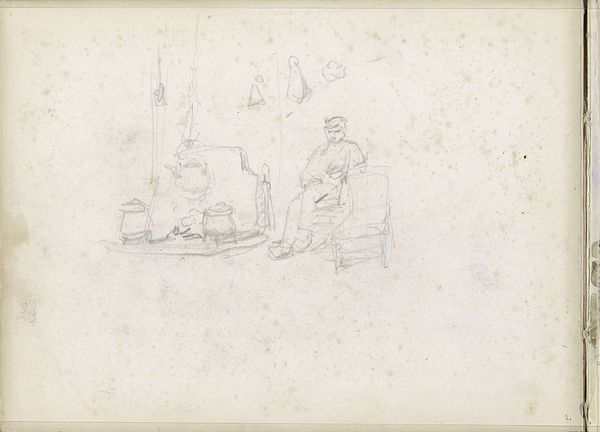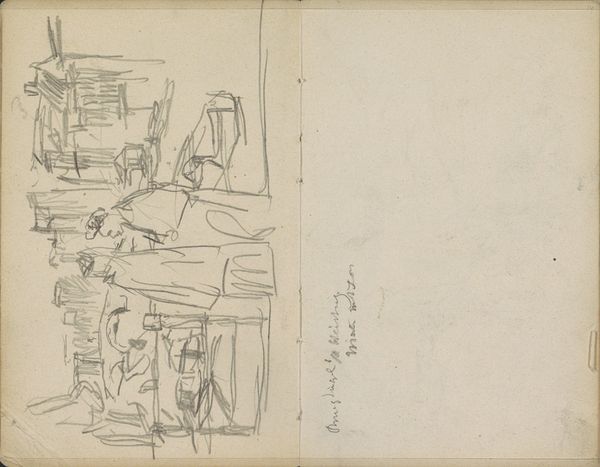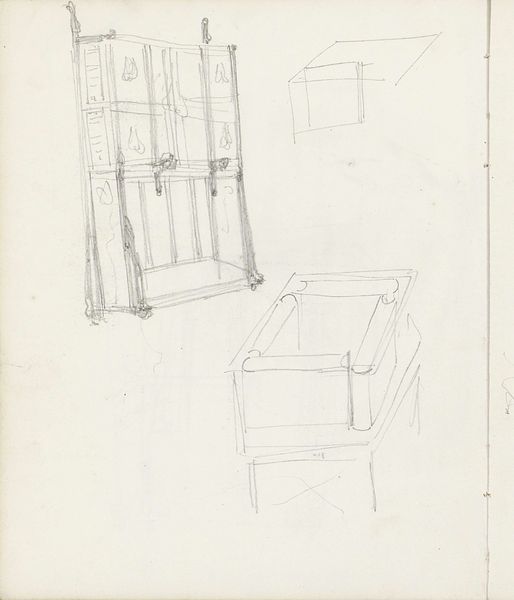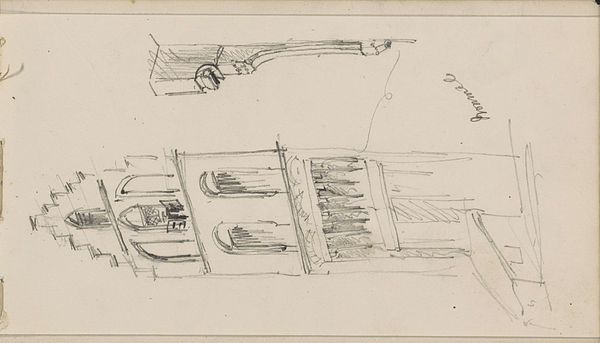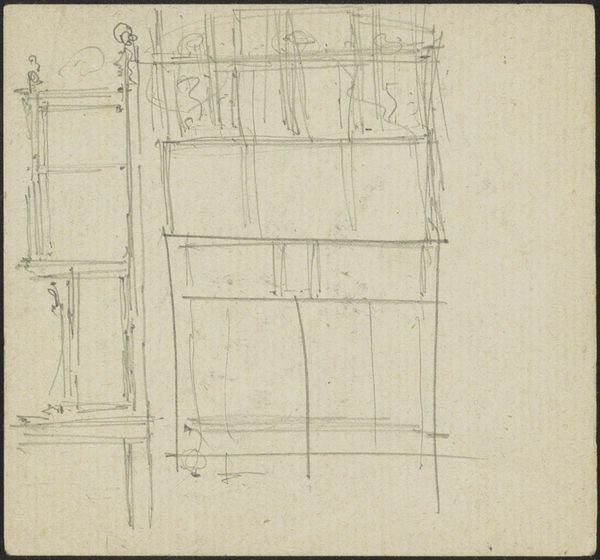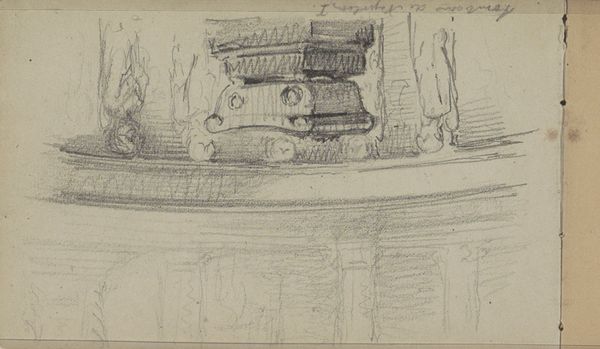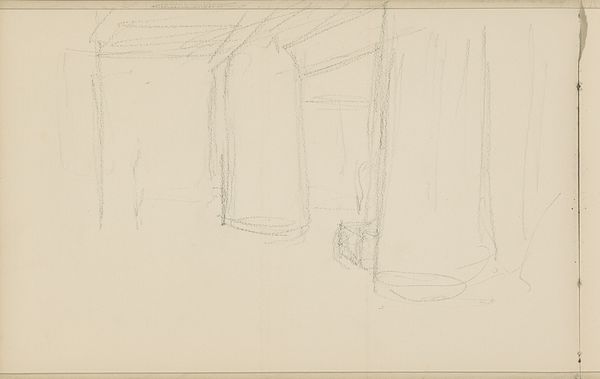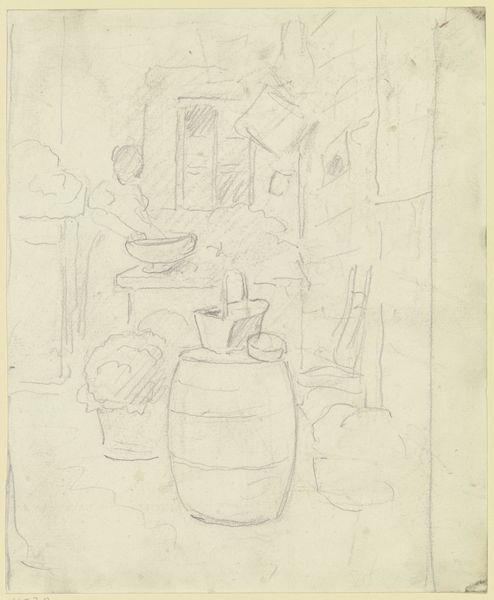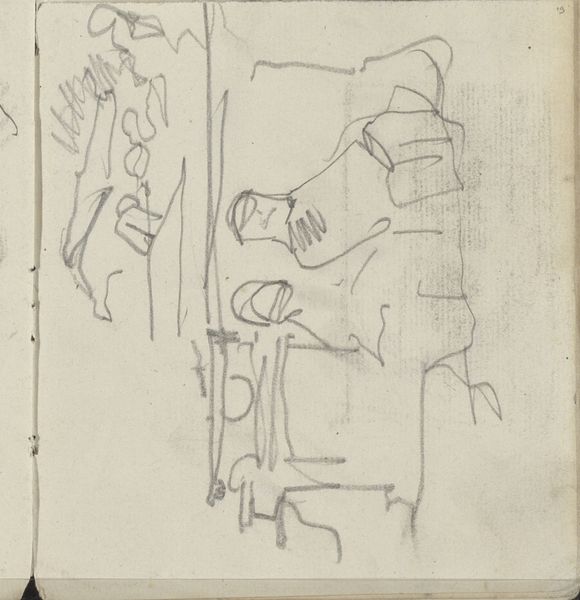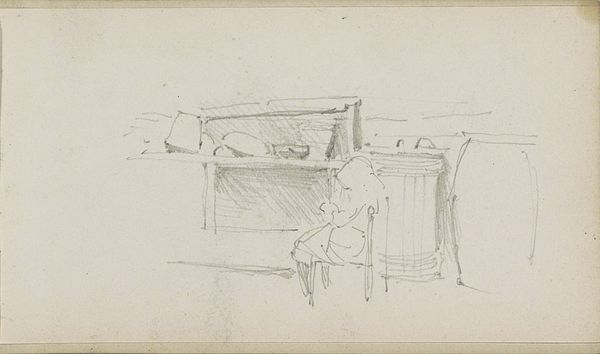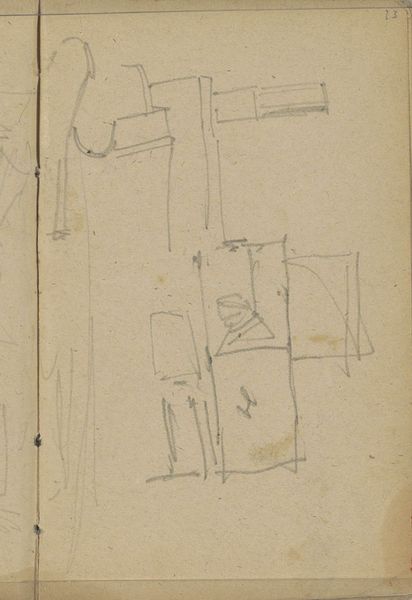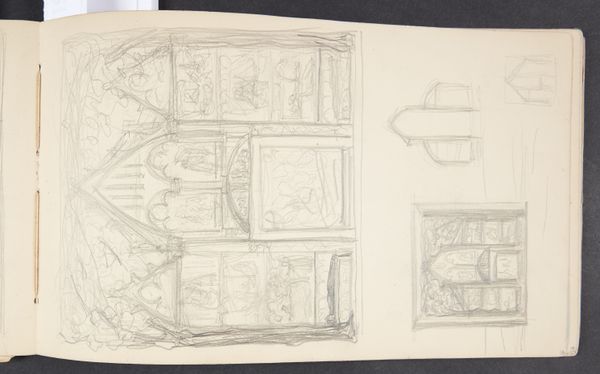
Arkitekturstudier, bl.a. af brystningen på et tårn 1897 - 1898
0:00
0:00
drawing, paper, pencil, architecture
#
drawing
#
paper
#
geometric
#
pencil
#
line
#
architecture
Dimensions: 121 mm (height) x 207 mm (width) x 90 mm (depth) (monteringsmaal), 126 mm (height) x 207 mm (width) (bladmaal)
Curator: This pencil drawing from around 1897, titled "Arkitekturstudier, bl.a. af brystningen på et tårn," which translates to "Architectural Studies, including the parapet of a tower," comes to us from Danish artist Agnes Slott-Møller and now resides in the Statens Museum for Kunst. What's your first take on it? Editor: It has a beautiful fragility. I see architectural elements, yes, but rendered with such lightness it almost feels like a dream of a building, rather than a plan for one. The lines are so delicate, the forms only hinted at. Curator: Exactly. Let's consider Slott-Møller's position within the Danish art scene at the time. As a woman, she was often marginalized. Did architecture give her an outlet to challenge and explore more traditionally masculine-coded roles within construction? The study also reflects that era’s fascination with historical forms. Editor: I agree completely. We see this architectural study done in pencil on paper. Think of the materials: the lead extracted from the earth, the paper pulped and pressed. There is a strong connection between nature and its transformation into cultural objects, that we can draw inspiration from in considering Slott-Møller’s choices. Also, the line work: so precise yet provisional. This reflects the skill of craftsmanship involved, and her eye. Curator: Absolutely, there's a tension between precision and ethereality that speaks to her own complex identity within that society, right? We're seeing her wrestle with representation itself and that reflects a social struggle. Editor: I do think seeing that tension is fascinating when placed into that era. This allows one to have conversations on identity. The way that material shapes what gets seen or how someone is valued socially – and what skills or labors are elevated against others! The historical setting deeply changed how artwork was perceived in terms of gender and race biases regarding visual arts in particular societies like Denmark at that time! Curator: Looking closely then, perhaps that seeming fragility becomes a kind of strength, a refusal to be confined. Thank you for sharing this point of view! Editor: Yes! It makes us think not only how something gets constructed and its origins, it causes audiences re-analyze how those aspects influenced what someone makes creatively in tandem with social norms! Thanks too for sharing insights from socio-cultural lenses that deeply enriched meaning making through such different interpretations today!
Comments
No comments
Be the first to comment and join the conversation on the ultimate creative platform.
